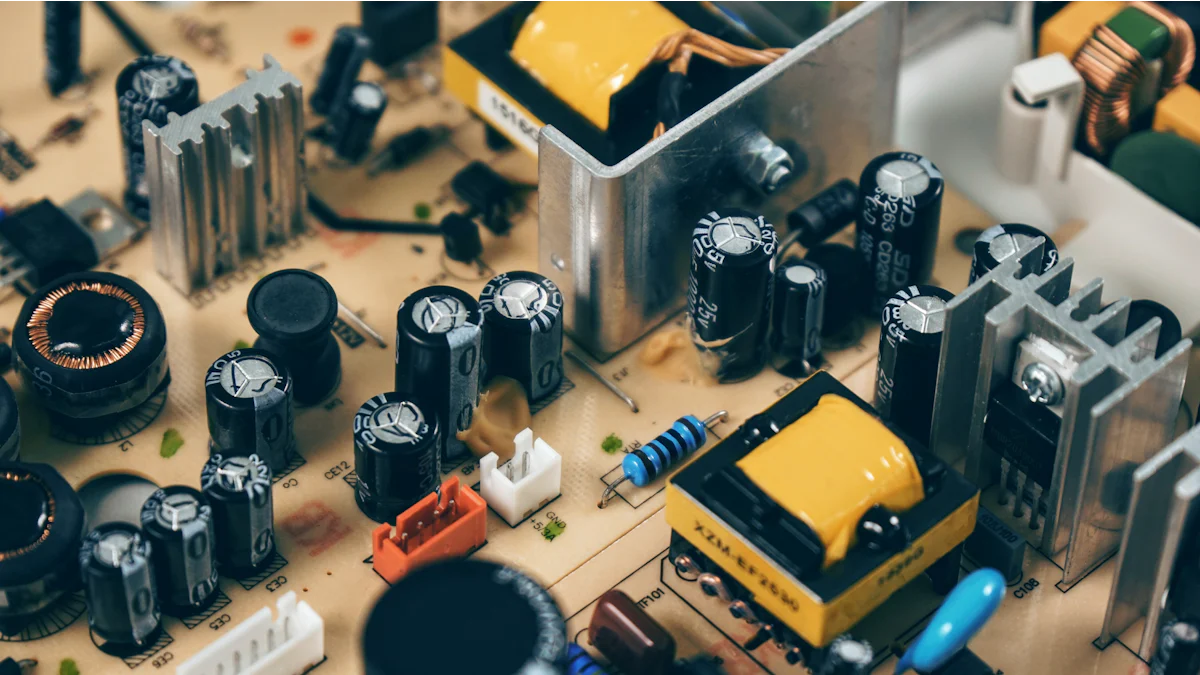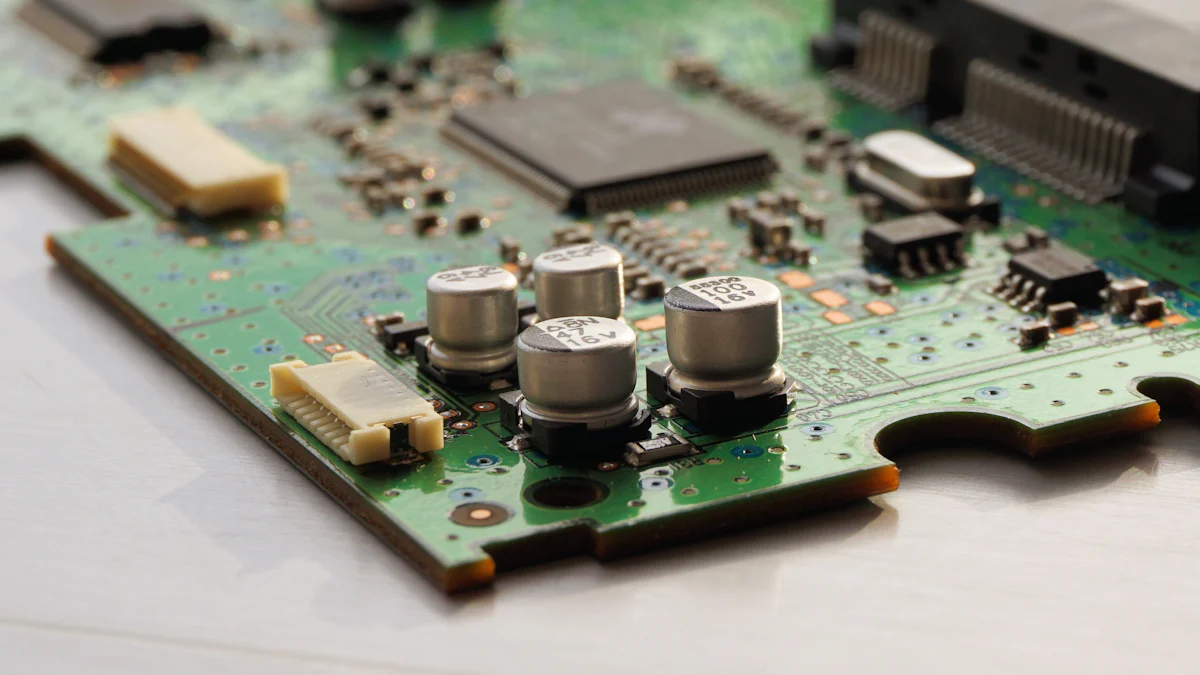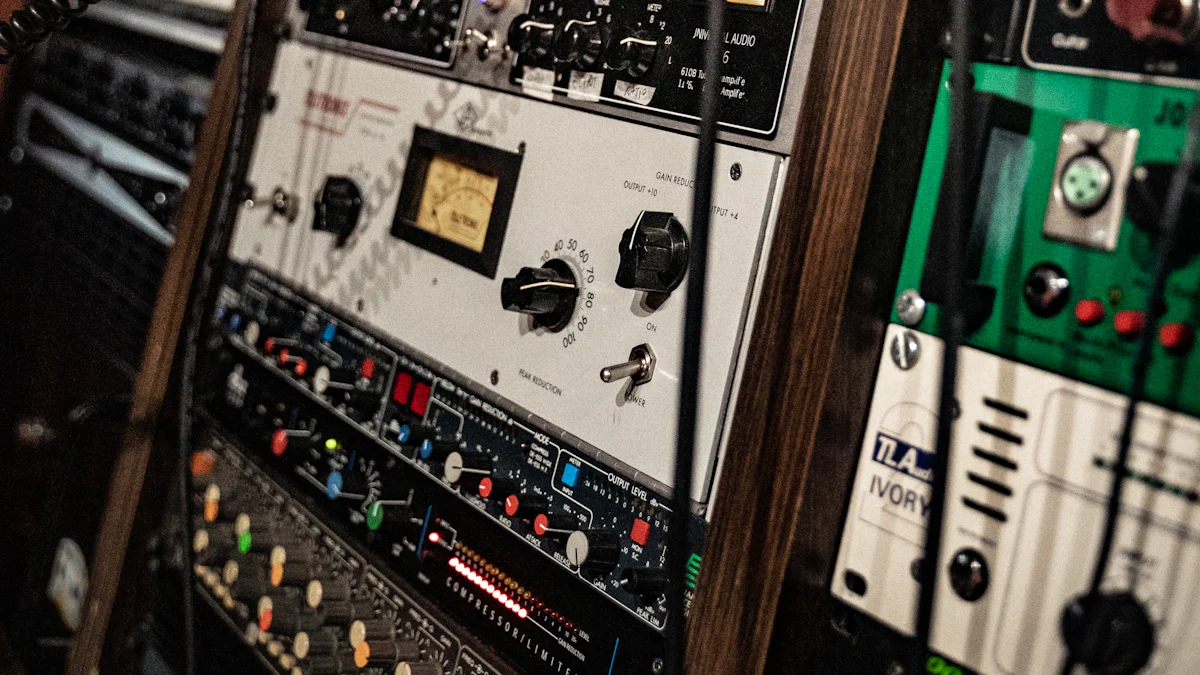Understanding hFE Transistor for Better Amplifier Design

The hFE transistor, also known as the forward current gain, plays a critical role in amplifier design. It represents the ratio of collector current to base current, determining how much the input signal gets amplified. A higher hFE value results in greater amplification, making it essential for achieving the desired performance. You must understand the importance of hFE to ensure proper biasing and stable operation. For example, in common emitter amplifiers, the gain directly depends on hFE, which highlights its significance in creating efficient and reliable circuits.
Key Takeaways
hFE, or forward current gain, is important for amplifiers. It shows how much the input signal gets stronger, affecting the circuit's performance.
Changes in hFE can make circuits unstable. Always check the hFE range in datasheets to pick the right transistor for your project.
Correct biasing keeps amplifiers working steadily. hFE helps find the base current needed for the right collector current.
Build circuits to handle hFE changes. Add feedback systems to keep gain steady and ensure the circuit works well in different conditions.
Watch for hFE changes over time. Use tricks like emitter resistors to keep the circuit stable and reliable for a long time.
What is hFE?

Definition of hFE
Ratio of collector current to base current
hFE, also known as the transistor current gain, represents the ratio of the collector current (Ic) to the base current (Ib) in a bipolar junction transistor. This ratio determines how much the input current at the base gets amplified at the collector. For example, if the base current is 1 mA and the collector current is 100 mA, the hFE value is 100. This makes hFE a critical parameter in understanding how a transistor amplifies signals.
Key parameter in transistor operation
You can think of hFE as a measure of the transistor's efficiency in amplifying current. It plays a vital role in designing circuits, especially amplifiers, where the goal is to boost weak signals. The hFE value directly impacts the performance of the amplifier, making it essential to consider during circuit design. The relationship between hFE and other parameters, such as input impedance, can be expressed mathematically. For instance:
Variable | Description |
|---|---|
hFE | Current gain of the transistor |
hie | Input impedance in common emitter configuration |
Ie | Quiescent emitter current |
Equation |
This equation shows how hFE influences the input impedance, which is crucial for achieving the desired performance in an amplifier.
Variability of hFE
Differences in hFE values among transistors
Not all transistors have the same hFE value. Even within the same batch, you may notice variations due to differences in manufacturing processes. These variations can affect the performance of your circuit, especially in applications requiring precise amplification. For this reason, you should always check the hFE value of a transistor before using it in your design. Datasheets often provide a range of hFE values, helping you select the right component for your needs.
Impact of temperature and manufacturing on hFE
Temperature changes significantly affect hFE. As the temperature rises, the hFE of a transistor tends to decrease. This means that in environments with fluctuating temperatures, you must carefully account for these changes to maintain stable performance. For example, in a bipolar junction transistor, higher temperatures can reduce the current gain, leading to less efficient amplification. Understanding these factors affecting hFE helps you design circuits that remain reliable under varying conditions.
Importance of hFE in Amplifier Design

Impact on Amplifier Gain
Role of hFE in determining overall gain
The hFE transistor plays a vital role in determining the overall gain of an amplifier. This parameter, also known as current gain, directly influences the transistor's ability to amplify current. A higher hFE value allows the transistor to amplify the input current more effectively, resulting in a stronger output signal. For example, in a common emitter amplifier, the gain is proportional to hFE, making it a critical factor in achieving efficient signal amplification.
The hFE value impacts the transistor's amplification capability.
Higher hFE results in more pronounced amplification of the input current.
Understanding hFE is essential for designing efficient circuits, especially in common-emitter configurations.
Relationship between hFE and signal amplification
The relationship between hFE and signal amplification is straightforward. The hFE value, defined as the ratio of collector current to base current, acts as the amplification factor. In the active region of a bipolar junction transistor, the base current controls the collector current, enabling significant current gain. Small-signal transistors typically have hFE values ranging from 100 to 300, demonstrating their effectiveness in amplifying weak signals.
Role in Biasing
Influence of hFE on transistor biasing
The importance of hFE extends to transistor biasing. This parameter helps you calculate the base current required to achieve a specific collector current. Proper biasing ensures that the transistor operates in the desired region, maintaining stable performance. Without considering hFE, you risk improper biasing, which can lead to circuit instability or even failure.
Importance of proper biasing for stability
Proper biasing is crucial for the stability of an amplifier. The hFE value determines the DC conditions for the transistor's operation. By setting the correct base current, you can ensure that the transistor remains in its active region, providing consistent amplification. This stability is especially important in circuits with varying input signals or environmental conditions.
Influence on Input and Output Characteristics
Effect of hFE on input impedance and output performance
The hFE value also affects the input impedance and output performance of an amplifier. Higher hFE values typically lead to higher input impedance, which helps preserve signal integrity. At the same time, a stable hFE ensures consistent output performance. Variations in hFE can result in unpredictable behavior, making it essential to select transistors with reliable hFE values.
hFE influences the input impedance, with higher values leading to better signal integrity.
Stable hFE ensures consistent output performance.
Variations in hFE can cause unpredictable circuit behavior.
Need for consistent hFE for predictable behavior
Consistency in hFE is key to achieving predictable amplifier behavior. When designing circuits, you should account for potential variations in hFE due to temperature changes or manufacturing differences. Using matched transistors or feedback mechanisms can help you mitigate these variations, ensuring reliable performance.
Practical Considerations for hFE in Amplifier Design
Selecting Transistors with the Right hFE Value
Tips for choosing transistors based on hFE
When selecting a transistor, you should consider the variability of its hFE. Different transistor models often exhibit wide variations in hFE, even among units of the same type. This variability arises from manufacturing differences and environmental factors like temperature changes. To ensure circuit stability, you should design circuits that can tolerate fluctuations in hFE. For example, collector current variations can also impact hFE, which may affect the performance of your amplifier.
Using datasheets to find hFE values
Datasheets are invaluable tools for identifying suitable hFE values for your application. They provide essential technical details, including the hFE range for a specific transistor. This range accounts for manufacturing variations and changes in operating conditions. Instead of relying on a fixed hFE value, you should design circuits to accommodate the entire range specified in the datasheet. This approach enhances reliability and ensures consistent signal amplification.
Accounting for hFE Variability
Designing circuits to tolerate hFE variations
You can design circuits to handle hFE variability by accounting for potential fluctuations. This strategy ensures consistent performance, even when the hFE of individual transistors differs. For example, designing for a range of hFE values rather than a single value helps mitigate the unpredictability of transistor behavior. This approach is especially important in applications like the common emitter amplifier, where hFE directly impacts gain and voltage gain.
Using feedback mechanisms to stabilize gain
Feedback mechanisms are effective tools for stabilizing gain in circuits affected by hFE variability. By introducing negative feedback, you can reduce the circuit's dependence on hFE. This technique minimizes the impact of hFE fluctuations, ensuring stable and predictable performance. Negative feedback also helps maintain the quiescent operating point, which is critical for reliable transistor biasing.
Measuring hFE
Tools and methods for measuring hFE
Specialized instruments simplify the process of measuring hFE. These tools provide accurate results and are easy to use. Alternatively, you can measure hFE manually by applying a known current to the transistor's base and measuring the resulting collector current. Use the formula hFE = IC/IB, where IC is the collector current and IB is the base current, to calculate hFE. Manufacturers often use pulse testing to avoid temperature buildup, which can affect hFE measurements.
Verifying hFE values during circuit design
Verifying hFE values is crucial during circuit design. This step ensures that your calculations for transistor biasing are accurate, leading to stable operation. In configurations like the common emitter amplifier, the gain depends directly on hFE. Variations in manufacturing can result in different hFE values for the same model, so you should design circuits to operate across a range of hFE values for reliability.
Common Challenges and Solutions
hFE Drift Over Time
Causes of hFE drift and its effects
Over time, you may notice that the hFE of a transistor changes, which can disrupt circuit performance. Several factors contribute to this drift:
Temperature variations often reduce hFE as the temperature rises.
Increased collector current gradually decreases hFE.
Aging and environmental conditions cause long-term degradation of hFE.
These changes can lead to reduced amplifier gain and instability in circuits like the common emitter amplifier. If left unaddressed, hFE drift can compromise the reliability of your design.
Strategies to mitigate hFE drift
To counteract hFE drift, you should focus on stabilizing the operating conditions of your circuit. Adding emitter resistors provides local feedback, which helps maintain a stable operating point. Designing circuits with negative feedback also minimizes the impact of hFE variations. For long-term reliability, select transistors with stable hFE characteristics and ensure proper thermal management to reduce temperature-induced drift.
Mismatched hFE in Multi-Stage Amplifiers
Issues caused by mismatched hFE values
In multi-stage amplifiers, mismatched hFE values can create several problems:
Imbalanced current distribution disrupts the circuit's performance.
Reduced gain accuracy affects the overall signal amplification.
Output signal distortion becomes more likely, degrading audio or data quality.
These issues highlight the importance of addressing hFE mismatches during the design phase.
Solutions like matched transistor pairs
You can minimize mismatched hFE by using matched transistor pairs, especially in power amplifiers. For example, differential input transistors should have identical hFE values to ensure balanced operation. Adding emitter degeneration resistors (68-100 ohms) can further reduce mismatches. Current mirrors also help enforce equal current in input transistors, improving performance even when hFE values differ slightly.
Designing for hFE-Independent Performance
Techniques to minimize reliance on hFE
Designing circuits that do not heavily depend on hFE ensures consistent performance. You can achieve this by incorporating feedback mechanisms. Negative feedback reduces the circuit's sensitivity to hFE variations caused by temperature changes or manufacturing differences. This approach stabilizes the gain and improves reliability.
Using negative feedback for stability
Negative feedback plays a crucial role in stabilizing circuits with variable hFE. For instance, emitter resistors create local feedback by increasing the voltage drop as the collector current rises. This reduces the base-emitter voltage (Vbe), effectively stabilizing the collector current. By implementing these techniques, you can design circuits that maintain stable operation regardless of hFE fluctuations.
Understanding hFE is essential for designing efficient circuits. This parameter, also called β, determines how much the base current amplifies to produce a larger collector current. Typical hFE values range from 10 to 500, with most transistors around 100. However, variability due to temperature and manufacturing differences makes it crucial to account for fluctuations.
To improve amplifier performance, you should design circuits that tolerate hFE variability. Use feedback mechanisms to stabilize gain and select transistors with suitable hFE values. These steps ensure consistent and reliable operation in your designs.
FAQ
1. What does hFE stand for in a transistor?
hFE stands for "forward current gain." It represents the ratio of the collector current (Ic) to the base current (Ib) in a bipolar junction transistor. This parameter shows how much the transistor amplifies the input current.
2. How can you measure hFE in a transistor?
You can measure hFE using a multimeter with a transistor testing function. Insert the transistor into the appropriate socket, and the device will display the hFE value. Alternatively, calculate it manually using the formula:hFE = Ic / Ib.
3. Why does hFE vary between transistors?
hFE varies due to differences in manufacturing processes and environmental factors like temperature. Even transistors of the same type can have slightly different hFE values. Always check the datasheet for the expected range.
4. How does temperature affect hFE?
As temperature increases, hFE typically decreases. This happens because higher temperatures reduce the efficiency of the transistor's current amplification. You should account for this when designing circuits for temperature-sensitive environments.
5. Can you design circuits that don’t rely on hFE?
Yes, you can minimize reliance on hFE by using negative feedback. This technique stabilizes the circuit's performance, even when hFE varies. Adding emitter resistors also helps maintain consistent operation.
💡 Tip: Always design circuits to tolerate hFE variations for better reliability and stability.
See Also
Decoding Pole Calculation Techniques For Amplifier Design
A Beginner's Guide To Understanding The 1k Resistor
Exploring Amplifier Gain Through Formulas And Practical Examples
Calculating Potentiometer Loading Errors: A Comprehensive Guide
